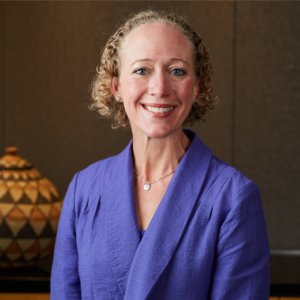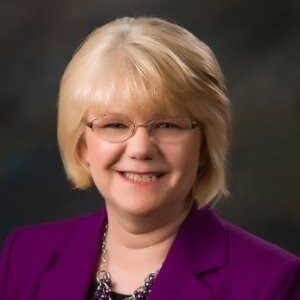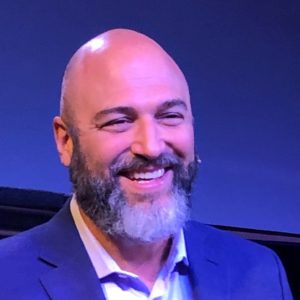Complying with F-tag 248
At a glance…
Complying with the “Activities” F-tag is a win-win for the facility and the surrounding community.
Quality of life” is a term reflective of our ethnic heritage, lifestyles, personality, and achievements. Acting on the premise that “life is activity,” residents in healthcare settings have needs and desires to be recognized as individuals with purpose, choices, and meaning in life just as those of us who live independently in the community.
This article shares some simple, easy-to-implement all-staff training and communication tools that will build confidence and ensure that your staff understand its responsibilities and the need to comply with the Centers for Medicare & Medicaid Services (CMS) F-tag 248, “Activities,” which states:
The facility must provide for an ongoing program of activities designed in accordance with the comprehensive assessment, the interests, and the physical, mental, and psychosocial well-being of each resident.
The Surveyor’s Interpretive Guidelines for this regulation has many clear indicators with the need to review the staff’s (not just activities) knowledge of and its involvement (supportive and/or interactive) in the individual resident’s activity assessed interests and needs as indicated on his or her plan of care (e.g., one to one, group, and special events programs).
One of F-tag 248’s criteria is that activities are “person appropriate.” These include, but are not limited to, activities that promote self-esteem, pleasure, comfort, education, creativity, success, and independence.
Activity planning
The Activity Director should routinely provide in-service training to all staff on the above specifics that require a facility’s team approach to daily activities and/or programs. Everyone needs to:
understand what their programming role is so that each resident has an opportunity to reach his or her highest level of achievement and satisfaction.
know how to ensure and engage residents in their individual plan of care activities.
establish a daily activities communication routine to keep residents informed of program changes, provide reminders for residents to check the activity calendar for time and place of favorite programs, facility news updates, promote holiday and special events, provide contact with self-directed residents assigned for any activity changes or needs, and encourage the use of adaptive and supportive devices or equipment. Activity rounds are scheduled each day on the monthly calendar before the first daily program starts. Establish a method to ensure that issues uncovered during rounds that require a follow-up have been completed.
develop a “Cultural Lifestyle” Assessment (CLA) tool, which provides valuable benefits. The activities and social service staff collaboration with this assessment’s content and completing the policy and procedures process has had good results. Suggested assessment categories for questions include community service involvement, military service, and psychosocial issues (e.g., What makes you happy…sad…mad…or uncomfortable?). Also ask about family heritage, favorite memories, favorite things to do, and personal likes/dislikes (colors, flowers, pet, vacation scent, holiday, or sport).
The resident’s adjustment to new surroundings is often a difficult process that affects the family and staff as they attempt to help the resident adjust. Having personal information on the CLA form from the day of admission has had a positive effect on the adjustment process.
Many facilities have designed a staff communication system with a “Resident Interests/Needs Notebook” for each unit by inserting the CLA form in a plastic sleeve in the notebook. A sign-in form is in the book to track and/or validate that staff have followed the instructions to review each form. The notebooks are kept in a secure area in the unit and are only available to staff. Staff benefits by increased knowledge with a better perspective and understanding of each person they provide services for.
Recommendation outcomes
Facilities that have implemented the above-mentioned recommendations (reflective of “Activities” meeting regulatory compliance) have indicated that they have enjoyed multiple benefits. There was an increase in the team approach with communication and an increased awareness of staff’s role in daily activities. Because of their involvement with activities, staff has watched what the residents are really capable of doing in a happy, fun environment. There is increased job satisfaction and confidence in their daily work routines. Both residents and staff are experiencing more meaningful interactions and conversations.
Community involvement
The following list of resources should be helpful in the development of innovative activities that enrich and educate your residents, while adding enjoyment to their lives:
Contact local universities and community colleges to see if instructors are available to teach classes focusing on geographic/historical topics related to culture and ethnicity.
Local historical societies often have speakers who can display items that stimulate memories and discussions about the residents’ various heritages. Other topics might include antiques, the arts, and historical films.
Visit your chamber of commerce for a list of local clubs. For example, antique car clubs have shown cars with its members dressed in the clothes of the era-a great special outdoor event. A horticulture/garden club can assist with gardening projects, and bring in flowers for floral design classes. A bridge club will help the residents form one of their own.
Art, dance, music, yoga, and Tai-Chi businesses may have instructors that do demonstrations, recitals, and concerts.
Sports clubs, such as fishing, hunting, golf, or tennis, recruited members to join the facility Men’s Club.
Veteran’s clubs, such as the VFW and American Legion, provide volunteer services and are known to provide facilities with American flags that have flown over the U.S. Capitol in Washington D.C.
Fire/police departments have responded to facility invitations to join programs, such as the Men’s Breakfast Club, for social interaction. They also enjoy helping with barbecues.
Scouts, youth groups, and 4-H clubs will work on badge projects with residents. If space is available, these groups are often looking for meeting rooms.
Talent agencies can provide clowns (or clown classes) to bring smiles, laughter, and joy.
Because of their involvement with activities, staff has watched what the residents are really capable of doing in a happy, fun environment.
A special holiday event
In California, a fun and interactive holiday celebration was developed and coordinated by The Classic Residence by Hyatt of La Jolla’s Lifestyle Manager Trixie Handy, who wanted to give residents with Alzheimer’s an opportunity to enjoy a formal holiday dinner dance off the unit in the facility ballroom. It took three months to plan and coordinate the event. Formal invitations were also sent to family, friends, and Miss San Diego and her Court. The residents and their guests were treated to an evening of Big Band-era music.
Planning participants
It took planning and teamwork from all departments to host this event. A ballroom dance instructor was hired. The DON and nursing staff were responsible for transporting residents to the gala and monitoring the residents’ safety.
The facility chef offered a prime rib menu and carving station followed by cheesecake for dessert, while the director of dining services arranged for beverages, including red and white wines and champagne. Dining services staff was responsible for ballroom and table setup, coffee stations, and cleanup (assisted by Housekeeping). Maintenance was responsible for the ballroom setup including audio checks.
Classic Residence’s assistant executive director enlisted social services, admissions, registered dietician, the director of resident services, and corporate dining service personnel to provide hands-on assistance at the event. Various staff members were assigned to host each table and initiate introductions and conversation, while other staff helped each resident through the buffet line. To top off the celebration, Santa passed out gifts to the residents.
Event wrap-up
Staff, family, and friends were amazed at how the residents reacted when greeted by a knock on their door by Miss San Diego and Court escorting them to a formal dinner dance. Residents interacted easily with others and their smiles and responses exhibited an awareness of this special event.
Ladies had fun dancing with the tuxedoed ballroom dance instructor, while Miss San Diego and her Court invited male residents for a dance.
Not only was this a positive experience for the residents, but it brought back memories for spouses, families, and friends that danced with their loved ones like old times. Even residents who never interacted with others danced the evening away and posed for photos in front of the Christmas tree.
Joan Flannigan, ACC, worked as an Activity Professional in healthcare for 30 years. Past President of the Southern California Association of Activity Professionals, she served as the Nominations Trustee for the National Association of Activity Professionals (NAAP). She is also an instructor for the State Activity Leader Course, works as an Activity Director, and is a Quality Assurance consultant for Care Enterprises and Regency Healthcare, Inc. For further information, call (760) 473-5754 or e-mail
To send your comments to the editor, e-mail mhrehocik@iadvanceseniorcare.com.
Long-Term Living 2009 November;58(11):24-27
I Advance Senior Care is the industry-leading source for practical, in-depth, business-building, and resident care information for owners, executives, administrators, and directors of nursing at assisted living communities, skilled nursing facilities, post-acute facilities, and continuing care retirement communities. The I Advance Senior Care editorial team and industry experts provide market analysis, strategic direction, policy commentary, clinical best-practices, business management, and technology breakthroughs.
I Advance Senior Care is part of the Institute for the Advancement of Senior Care and published by Plain-English Health Care.
Related Articles
Topics: Articles , Regulatory Compliance











